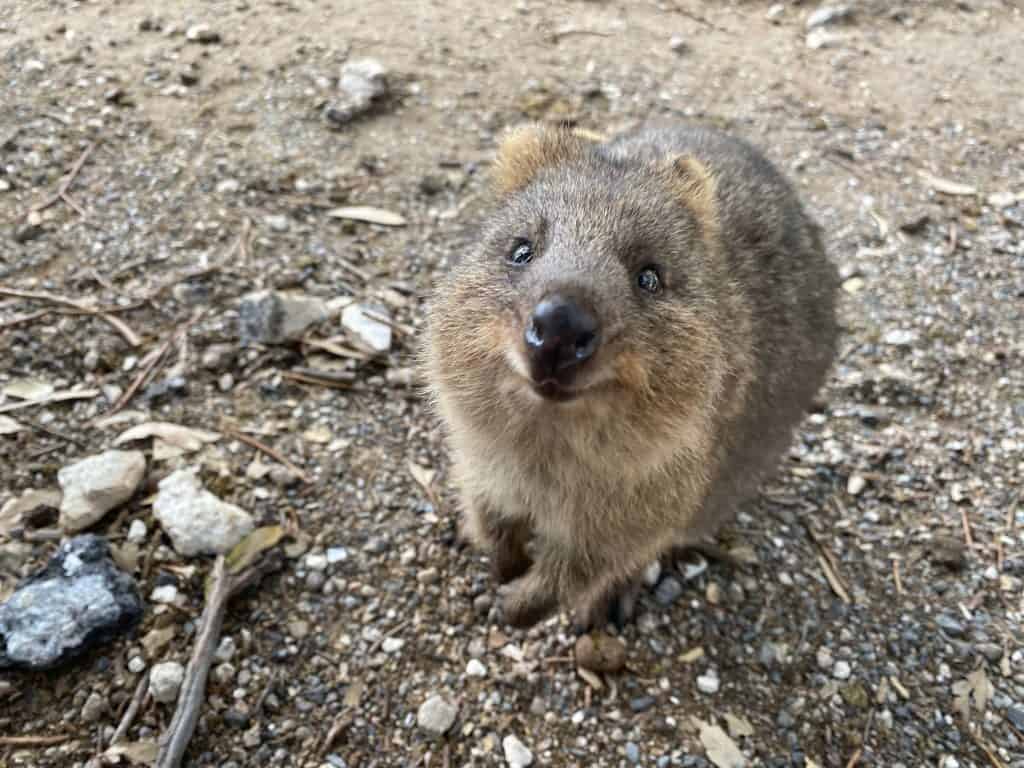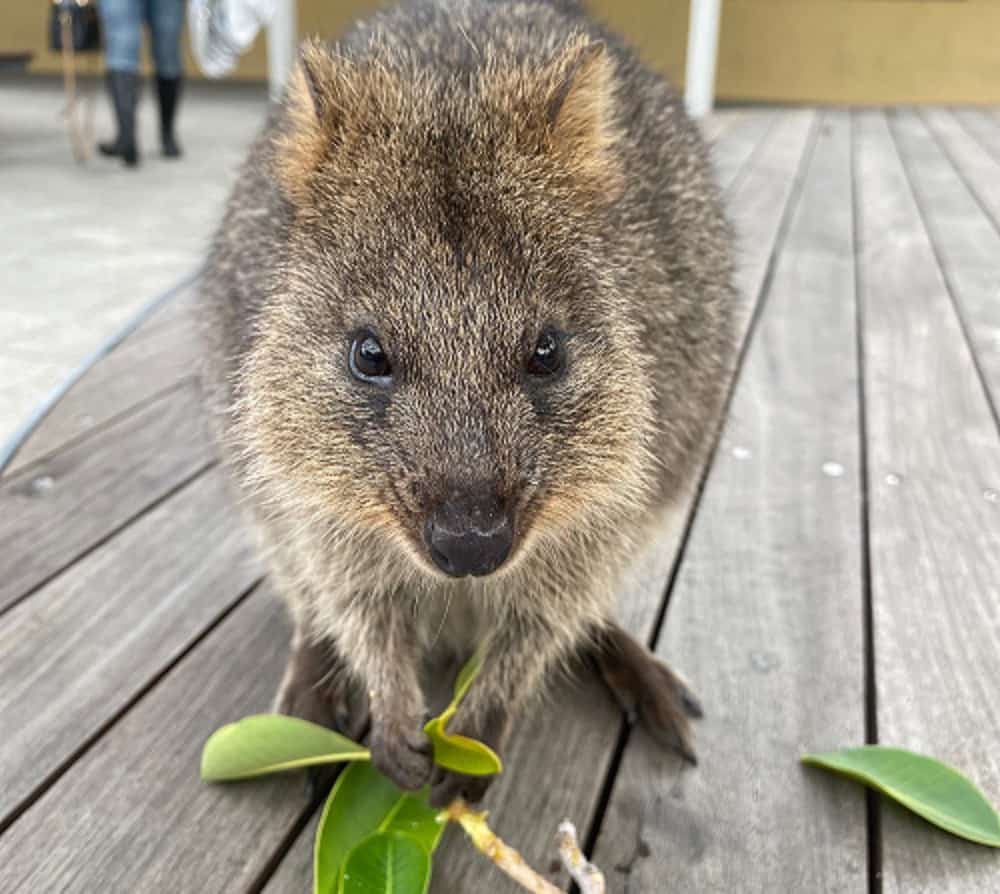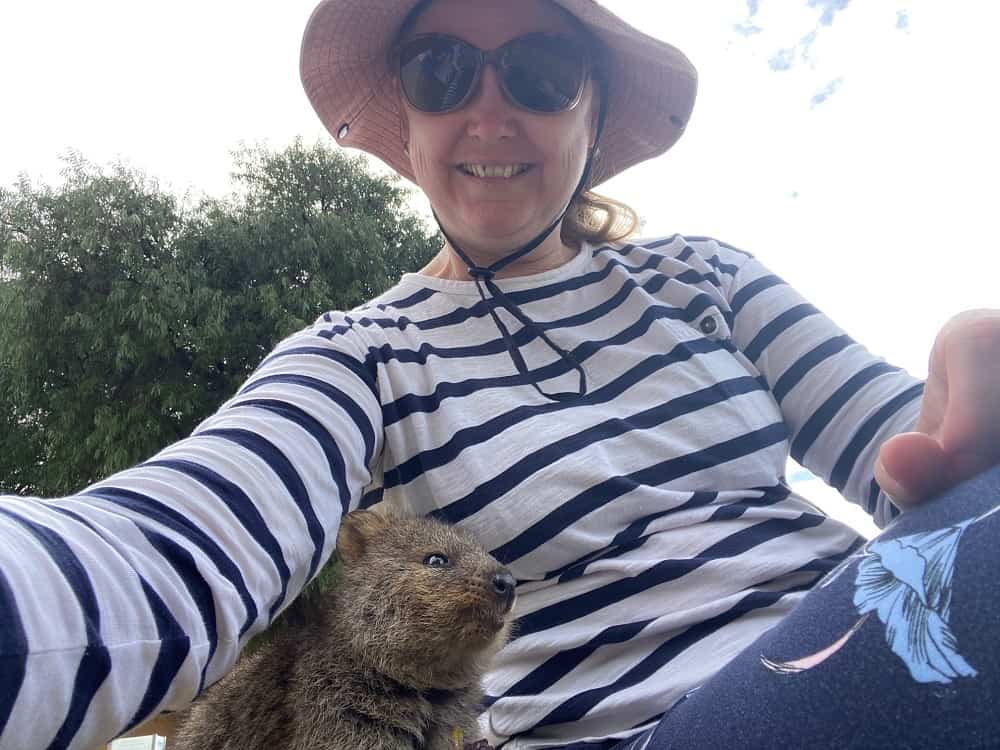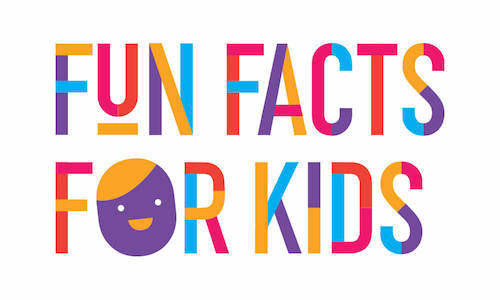Quokkas are often known as the happiest animals on earth due to their signature smiles. They’re found everywhere on social media, subject to numerous selfies by both tourists and celebrities. Whether you’re here for your own enjoyment, or looking for information on animals for a school project, you’re in the right place. Below are fun facts about Quokkas, their habitat, what they eat, and more!
Quokka Fun Facts
Quokka’s scientific name is Setonix Brachyurus. The term ‘Quokka’ originates from the name given to them by the Aboriginal people living in Western Australia. They are medium-sized mammals. Whilst they may look small in photos, Quokkas are actually the size of a small cat. Their signature ‘smile’ is actually due to the shape of their mouths, as they open and stick their tongues out to pant and stay cool during hot temperatures.
This adaptation was made as they live in a place where the sun shines for 12 months every year. They have thick, coarse, grey-brown fur, which allows them to hide in tall grass from predators. Quokkas have short, round, fluffy ears, and a chubby tail that can reach up to 31 cm in length. Males are typically larger in size than females.
Below is a list we gathered of 10 fun facts about these incredibly intelligent animals:

10 Fun Facts about Quokkas
- Quokkas were first discovered in the 1600s, by Willem de Vlamingh. At first, he thought it was a very large rat. This led him to name the Island “Rottennest”, meaning “rat’s nest” in Dutch. The name has since been adapted to Rottnest Island.
- The current Quokka population is estimated to be around 20,000.
- Quokkas come from the same family as kangaroos and wallabies as they are Australian Marsupials (Macropodidae Family). Bonus fact: Australian marsupials are one of the only two mammal groups that can see in full colour.
- Like Kangaroos, baby quokkas are known as ‘joeys’
- Quokkas move around by hopping and bounding, using their hands to move forward.
- Quokkas are great at climbing trees- they can climb up to 2 metres, usually to reach food.
- They are very peaceful with each other. They are able to co-exist in the same habitat, sharing shelter, food, and water, without getting territorial.
- However, they do have sharp claws and teeth, and can attack if feeling threatened.
- They often invade public spaces and restaurants on Rottnest Island, to the point where many locals consider them annoying.
- Quokkas are nocturnal animals, meaning they spend most of the day sleeping and are most active at night.
Check out these cool Quokka Stickers! You can use them to decorate your notebooks, laptops, iPad cases, and pretty much anything!
Where do Quokkas live?
Before European settlement, Quokkas were found distributed all across South-Western Australia. However, today, these small animals are generally only found in one location: Rottnest Island, Australia. Few populations inhabit the mainland’s south-west forests such as those near Northcliffe. They can also be found in a variety of zoos and parks across Australia. Their lifespan in the wild is typically around 10 years on average. However, they can live for longer in captivity.
Rottnest Island is currently the home of over 10,000 Quokkas. The holiday destination is located just offshore from the city of Perth, Western Australia. Despite being widely known as a tourist hotspot, Rottnest Island is a protected nature reserve. Quokkas main habitats are: dense riparian vegetation, and heath and shrubland on the mainland coast and offshore islands. Their preferred habitat is always close to water.
What do Quokkas eat?

Quokkas are herbivores, meaning they require a plant-based diet in order to survive. Their diet mainly consists of native grasses, leaves, stems, and bark of a variety of plants. They occasionally eat fruit when available. Quokkas usually feed at night, either alone or in small bands. They tend to feed on the different grass that lines the tunnels they dig through dense vegetation.
Their chubby tails store fat as a means of surviving when food and water supplies are low, meaning they are able to go live a long time without food and water. They can go months without any water. This may be a bit gross, but in order to absorb the nutrients from their food better, Quokkas swallow food whole, regurgitate it, and eat it again. They’re lucky they’re adorable!
Baby Quokkas
Baby Quokkas are called joeys, just like kangaroos! Quokkas can give birth to no more than two offspring per year- though they most commonly only birth one. When they are born, joeys ride around in their mother’s pouch until they are around 6 months old. This is when they start to independently venture off on their own. However, even after leaving the pouch, baby quokkas rely on their mother for milk for two more months. Maturity is reached when they are two years old.
Click here to find some really cute Quokka plushies! Buy them as a gift for your friend or keep them for yourself.
Quokka Species
Unlike most animals, there is only one species of Quokka.
Quokka Behaviours
Quokkas are known to be very friendly and social animals. They attract numerous tourists to Rottnest Island every year, which is one of the reasons for the holiday resort’s success. They inhabit the island in small family groups that are often dominated by males. However, they are not known to be territorial animals.
Up to 150 individual Quokkas are known to have over-lapping home ranges. Whilst they are usually peaceful towards each other, fights still occasionally occur. Quokkas are nocturnal, spending the day resting, and foraging for food at night. They do this using tunnels to move through the long grasses in order to remain unseen and avoid predators.
Do you need a new notebook to take your notes in? Treat yourself to one that has Quokkas on the cover!
Visiting Quokkas
Not only does Rottnest Island house majority of the Quokka population alive right now, but it also has a great holiday resort. If you’re looking to book a week-long holiday, a two-day trip, a one-day adventure, or anything in between, you can do so easily. Click here, and book whatever trip to Rottnest Island, and Quokkas, using Experience Oz.
Quokka Selfies 101

After finding out all these awesome fun facts about Quokkas, you might want your own iconic selfie with one. Hop on the trend popularised by tourists, as well as celebrities such as Shawn Mendes, Chris Hemsworth, and Margot Robbie. In order to make sure you get the best possible selfie, we have a compiled a list of tips and tricks to help you in this process.
- Quokkas are naturally curious, so you don’t have to approach one or bribe it with food. Simply get down to their level by crouching or siting down, and they will come close enough to take a photograph.
- Wait for the Quokka to look up, stretching their neck inquisitively, in order to snap the photo.. That is when their smile becomes most visible.
- Do not pet or touch them. Seeing as they’re small, furry, adorable creatures, the temptation to pet them may be high. However, Quokkas are wild animals. Touching them is illegal, and may result in you receiving a fine.
- Capture the candid moments. Quokkas are often doing photo-worthy poses without even trying. They’re just that cute!
- Take photos during the golden hours. Natural lighting is best one hour before or after sunrise and sunset, as the light is less harsh.
If you’re looking for an awesome new keychain, click here to get one with Quokkas!
Endangered Species
Quokkas are currently listed as vulnerable on the IUCN Red List due to the drastic decrease in their population sizes. There are two main causes for this:
- Habitat Loss: Bushfires and climate change have heavily impacted the Quokka population that inhabits Rottnest Island. Not only this, but human settlements have caused them to restrict to only small pockets of their natural habitat on the mainland.
- Predation: Predatorial feral animals such as cats, dogs, dingoes, and foxes continue to hunt Quokkas, threatening entire populations.
How can we help Quokkas?
If you want to help Quokkas maintain their population numbers, there is a lot you can do! You can start off by spreading awareness. A lot of people aren’t aware that Quokkas are listed as vulnerable, mainly due to the fact that they’re regarded as the happiest animal in the world. Sharing information costs nothing, and it can help shed light.
However, if you do have money to spend, you can adopt a Quokka. World Wildlife (WWF) has a really cool initiative where for $60, you can purchase an adoption certificate, a Quokka plushie, and a gift bag. All proceeds go towards helping Quokkas. If this sounds like something you’re interested in, click here!
Fun facts for kids about Quokkas
We hope you’ve enjoyed these fun facts about Quokkas. It is disheartening to see that the happiest animal on the planet is facing such an unfortunate situation. Quokkas are adorable animals, with a great strength when it comes to adapting to Australia’s harsh conditions. If you want to read about other animals as well, look below!
Animal facts for kids
- Giant Panda Bear Facts for Kids
- Ant Facts for Kids
- Crocodile Facts for Kids
- Dolphin Facts for Kids
- Echidna Facts for Kids
- Bee Facts for Kids
- Australia’s Deadliest Animals Facts for Kids
- Tasmanian Tiger Facts for Kids
- Cheetah Facts for Kids
- Endangered Animals Facts for Kids
- Kangaroo Facts for Kids
- Possum Facts for Kids
- Koala Facts for Kids
- Dog Facts for Kids
- Cat Facts for Kids
- Butterflies Facts for Kids
- Dingo Facts for Kids
- Turtle Facts for Kids
- Penguin Facts for Kids
- Whale Facts for Kids
- Wolf Facts for Kids
- Sustainability Facts for Kids
- Recycling Facts for Kids

